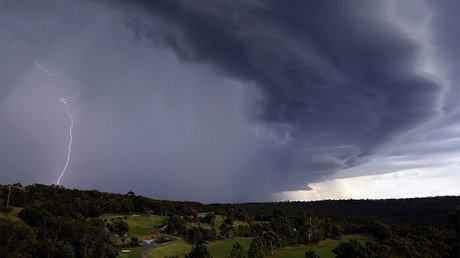Oil markets could see deficit in 2019
The OPEC+ cuts and slowing shale growth are likely to tip the scales in oil markets, and among others, Bank of America now sees a small deficit later this year.
The oil supply surplus is “starting to reverse,” according to a new report from Bank of America Merrill Lynch.
The investment bank noted that oil prices had collapsed in late 2018 not only because of an oversupply problem, but also because of other “non-fundamental factors,” including the selloff of long positions by hedge funds and other market managers, as well as by fear and uncertainty in broader financial markets. Still, the bottom line was that the oil market saw a glut once again emerge in the fourth quarter.
However, “now the 1.3mn b/d surplus in 4Q18 is starting to reverse,” Bank of America Merrill Lynch analysts wrote in a January 10 note. In fact, the bank says that the OPEC+ cuts could translate into a “slight deficit” for 2019. “With investor positioning reflecting a bearish set-up, Brent prices have already bounced back above $60/bbl, and we retain our $70/bbl average forecast for 2019,” BofAML wrote.
Also on rt.com Wall Street sees oil price recovery in 2019Oil price forecasts vary quite a bit, but a dozen or so investment banks largely agree that the selloff in late December, which pushed Brent down to $50 per barrel, had gone too far. BofAML is betting that Brent rises back to $70 per barrel.
However, the investment bank issued a rather significant caveat. This assessment is based on the assumption that the global economy does not take a turn for the worse. BofAML analysts said that Brent could plunge as low as $35 per barrel if global GDP growth slows from 3.5 percent to 2 percent.
At this point, it is anybody’s guess if the global economy slows by that much, but there is a growing number of indicators that at least suggests such a deceleration is possible. The recent data from China showing a shocking slowdown in both imports and exports is discouraging. Exports fell 4.4 percent in December from a year earlier, while imports crashed by 7.6 percent, suggesting that the world’s second largest economy is starting to weaken a bit.
Also on rt.com World may face ‘low price scenario’ for oil this year if OPEC plan fails, JP Morgan warnsNevertheless, the oil market fundamentals, as they stand, do not look overly bearish. Bank of America Merrill Lynch estimates that supply from OPEC+ will fall by a whopping 2.6 million barrels per day (mb/d) in the fourth quarter of this year compared to the fourth quarter of 2018. That figure includes the 1.2 mb/d of agreed upon cuts, plus substantial losses from Iran and Venezuela. Those significant declines, combined with slower US shale growth and a steady increase in demand, should be enough to tip the oil supply balance into deficit territory, BofAML concludes.
“On a net basis, we see aggregate [year-on-year] global oil supply growth of just 400 thousand b/d in 2019 and a deficit building into the summer months,” the bank said.
READ MORE: What’s behind the crash in crude?
Moreover, the supply surplus that did emerge in late 2018 was much smaller than the one that occurred between 2014 and 2016. The most recent surplus totaled perhaps 200 million barrels, compared to around 1-billion-barrel surplus in the 2014-2016 period, according to Scotiabank. In that context, erasing the glut should be easier to achieve.
As such, top OPEC+ officials do not seem overly concerned. “Market sentiment today is being shaped by undue concerns about demand, underestimation of the impact of agreed supply cuts, and a misreading of the supply-demand trends which causes counterfactual actions by financial players,” Saudi oil minister Khalid al-Falih said at the Atlantic Council’s 2019 Global Energy Forum in Abu Dhabi.
Also on rt.com OPEC-Russia alliance to extend oil production cuts if necessary“In other words, if we look beyond the noise of weekly data and vibrations in the market, and the speculators’ herd-like behavior, I remain convinced that we are on the right track and that the oil market will quickly return to balance,” he said.
One of the key variables to watch is Iran’s oil exports levels. Waivers granted to countries importing oil from Iran expire in May. The top US official dealing with Iran sanctions, Brian Hook, hinted at the same conference in Abu Dhabi that the American government wouldn’t be as lenient this time around. “All I can say is that certainly when we have a better supplied oil market, then that will put us in a better path to [reducing Iranian crude exports] to zero,” Hook said.
This article was originally published on Oilprice.com














